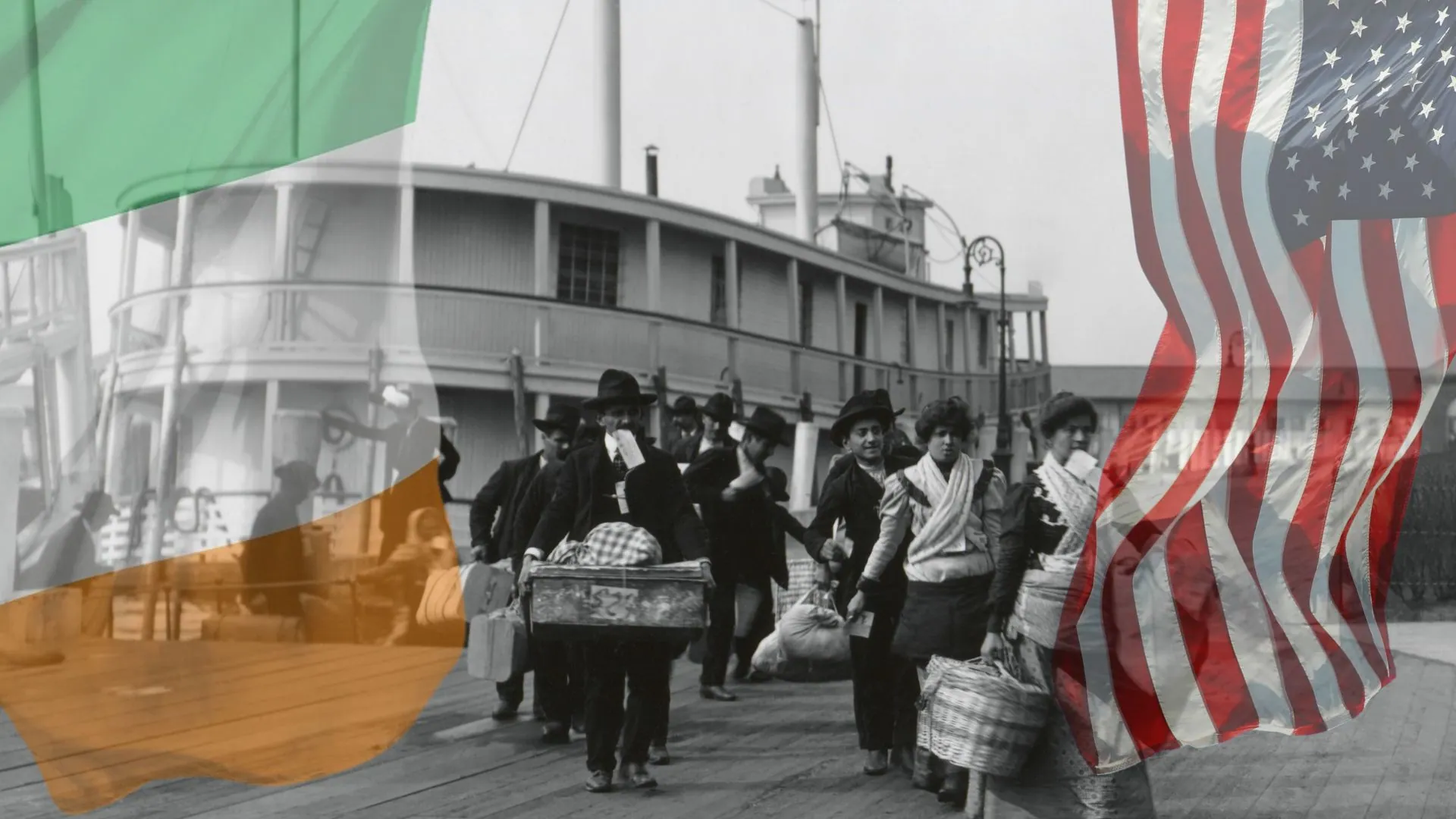Irish immigration to America was a significant wave of migration that lasted throughout the 19th and early 20th centuries. Over 6 million Irish people have emigrated to the US since 1820.
Key points of Irish Immigration to America
Push-Pull Factors:
- Push: Poverty and Famine – Harsh economic conditions, particularly the Great Potato Famine (1845-1852), forced many Irish to leave their homeland for a better life.
- Pull: The booming American economy offered job opportunities, especially in manual labor like canal and railroad construction.
Waves of Immigration:
- Early 19th Century: Before the Famine, many Irish immigrants were Protestants from Ulster.
- The Great Famine (1845-1852): This period saw a surge of immigration, with many Irish Catholics fleeing starvation and disease.
- Post-Famine: Irish immigration continued throughout the late 19th and early 20th centuries, with families reuniting and new opportunities emerging.
Challenges Faced:
- Discrimination: Irish immigrants faced prejudice due to their religion (Catholicism) and ethnicity. They were often seen as unskilled laborers and blamed for driving down wages.
- Poor Living Conditions: Many Irish settled in crowded slums in cities like Boston and New York, facing harsh living conditions and disease.
Contributions:
- Labor Force: The Irish played a vital role in building America’s infrastructure, working on canals, railroads, and urban development projects.
- Culture: Irish culture has become an integral part of American society, influencing music, literature, and celebrations like St. Patrick’s Day.
RELATED: US Immigration from Abu Dhabi
Irish immigration is a complex story of hardship and resilience. It reminds us of the significant role immigrants have played in shaping American history and culture.
Foe more details visit: https://www.museum.ie/en-IE/Collections-Research/Folklife-Collections/Folklife-Collections-List-(1)/Other/Emigration/Irish-Emigration-to-America
